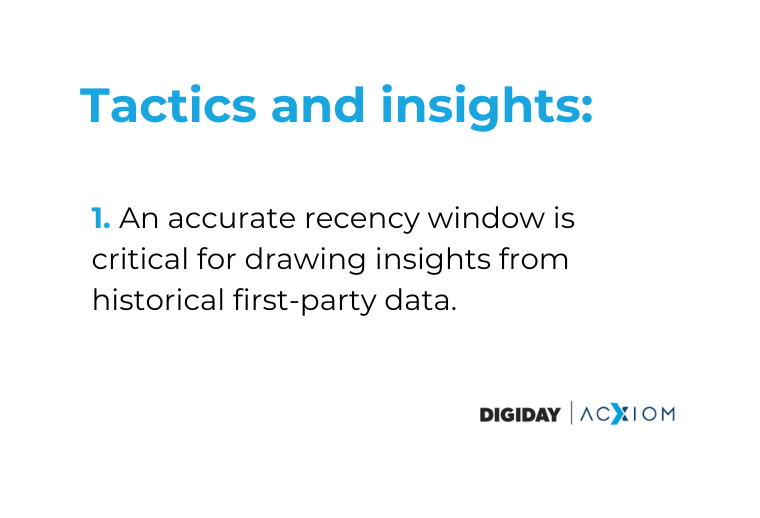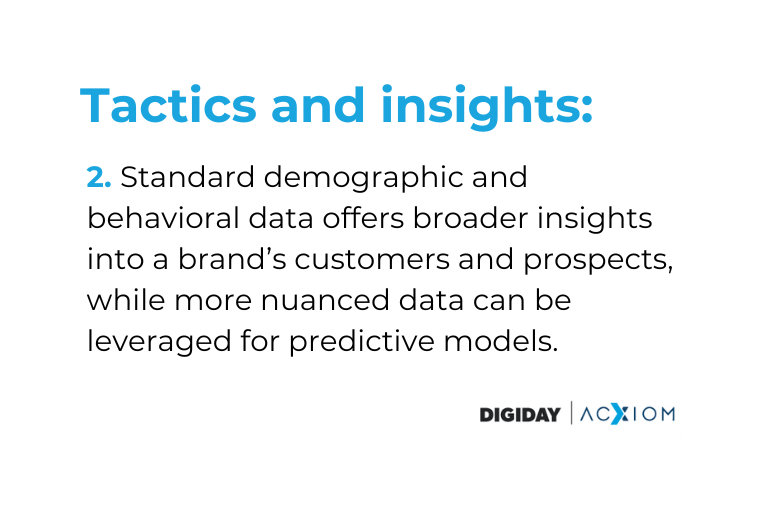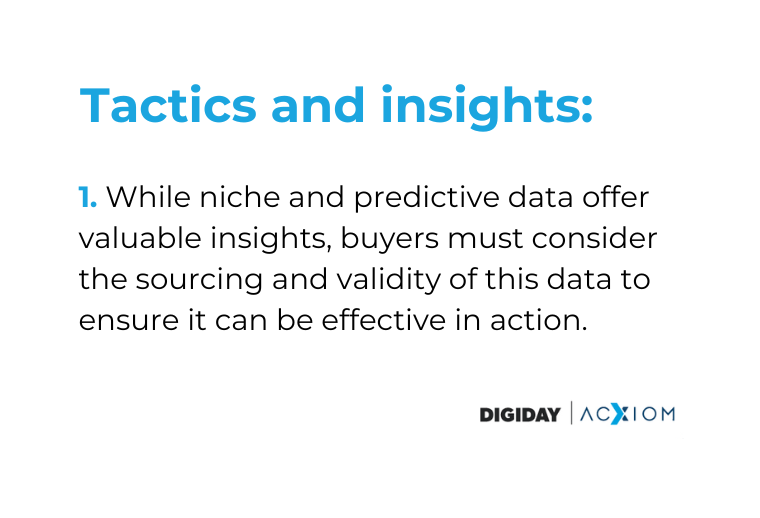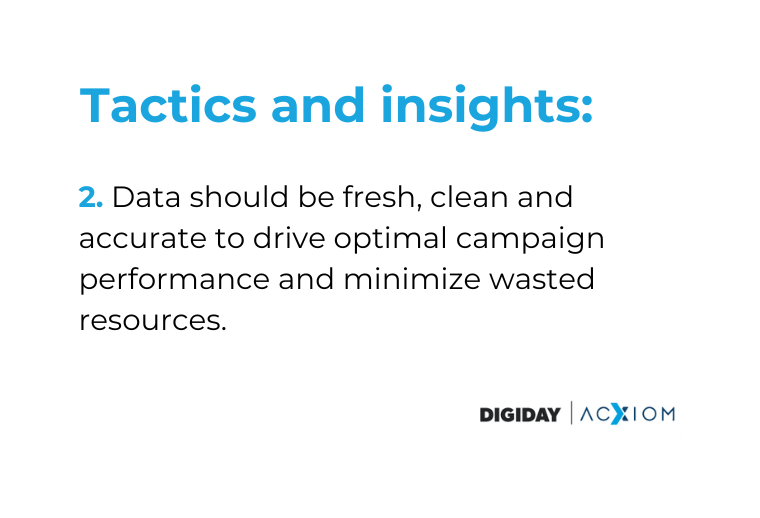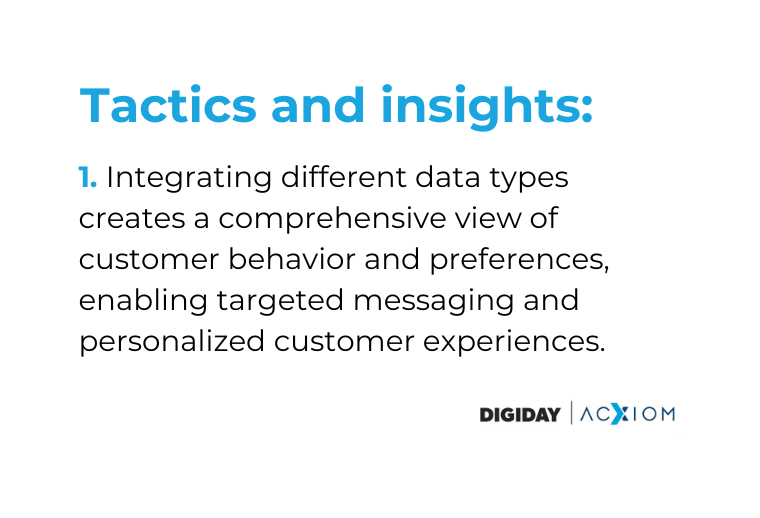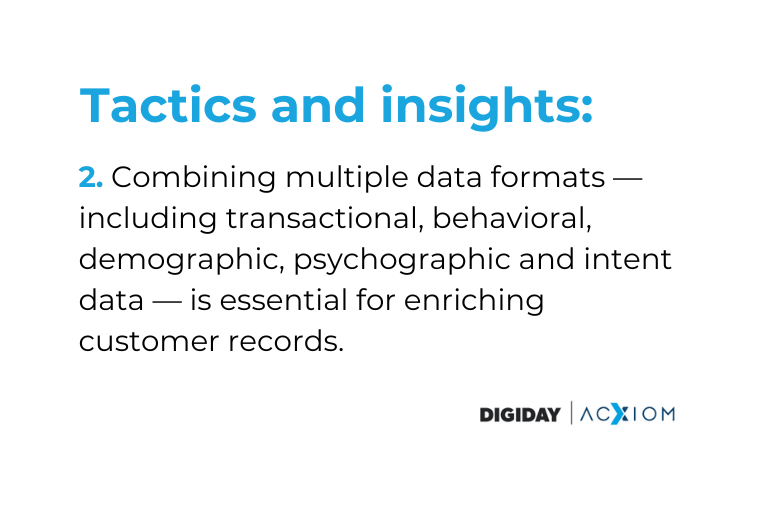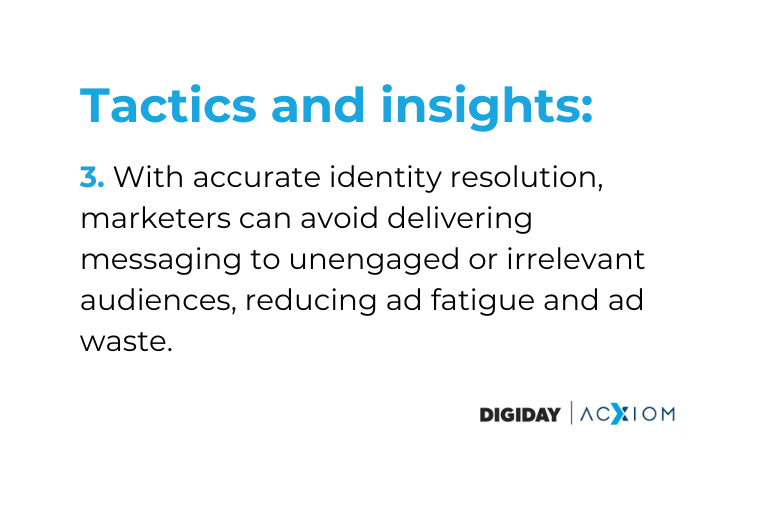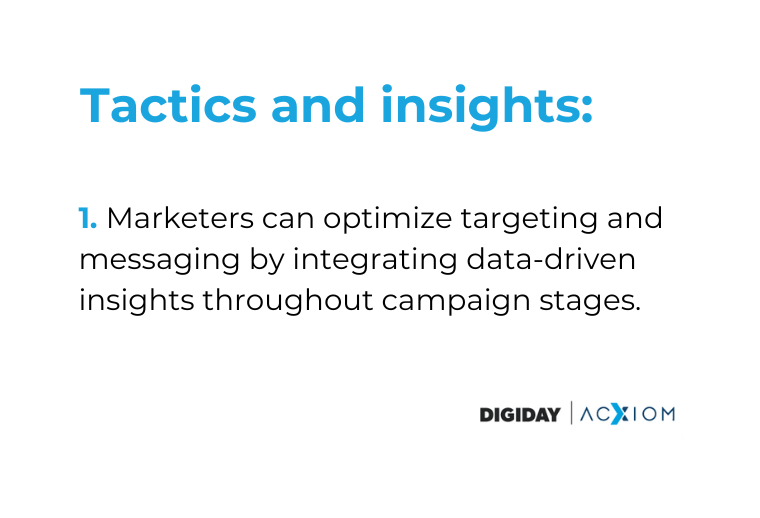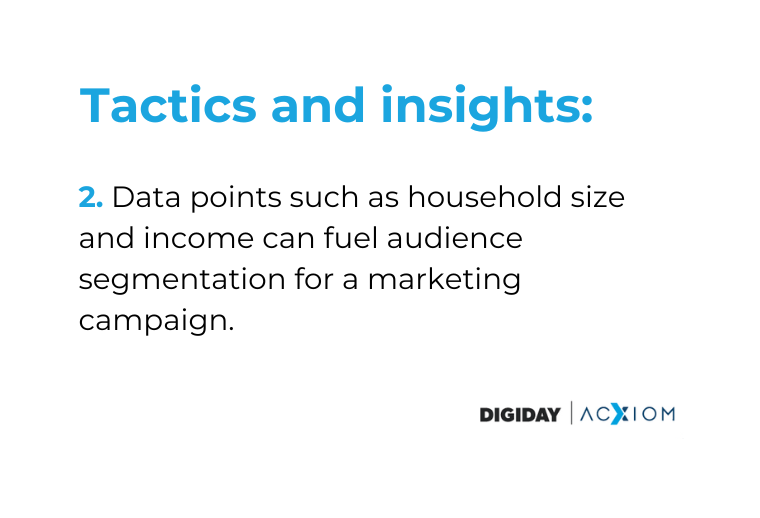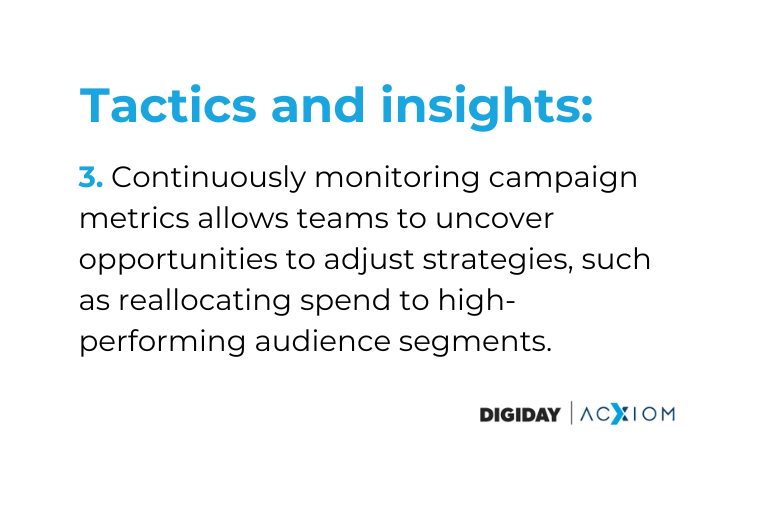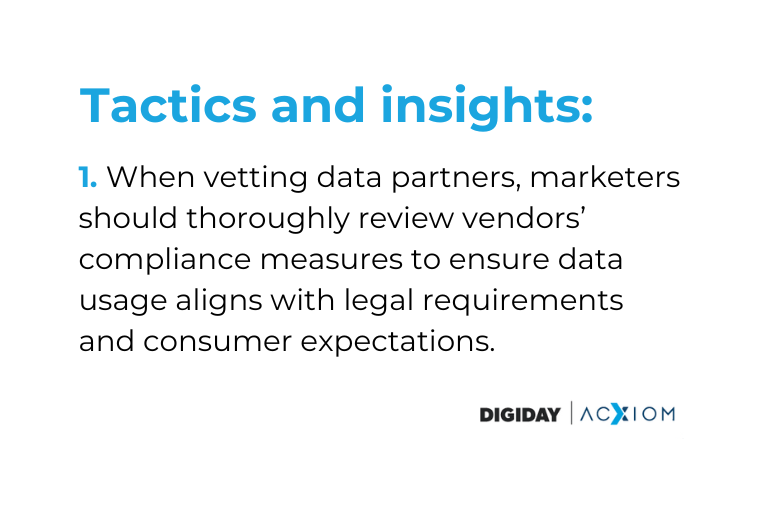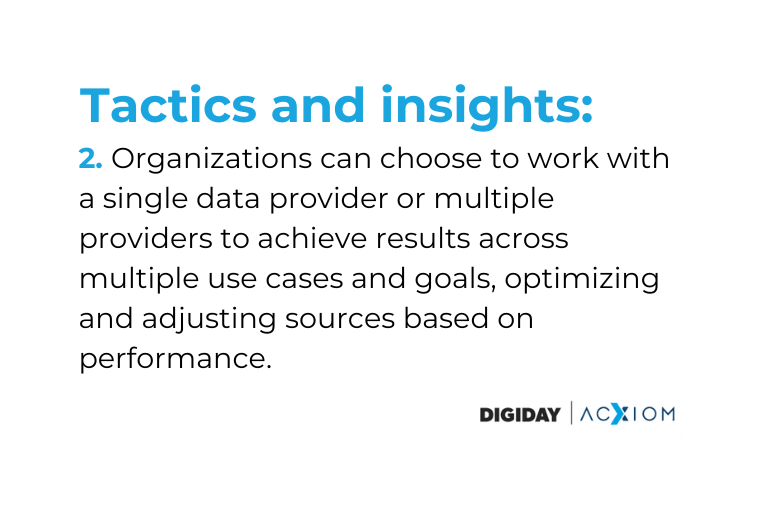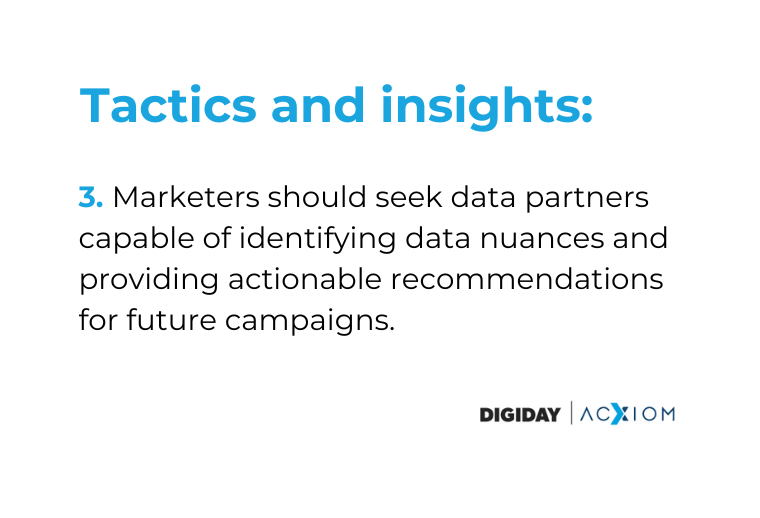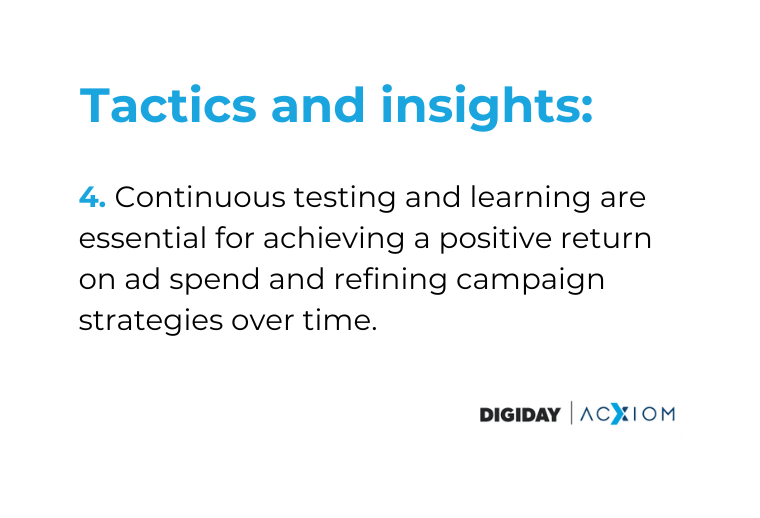
This Tactics + Insights guide, sponsored by Acxiom, examines how brands and agencies buy and activate data for more impactful campaigns. With high-quality data, marketers develop more insights to their audiences to improve campaign performance and drive growth.
As the need for data accelerates with the fluctuating third-party cookie deprecation timeline, savvy brands and agencies are adopting a strategic approach to data acquisition and analysis to maximize their digital marketing.
Data buying is essential for consumer-facing brands and agencies to enhance their existing data and develop more robust insights into consumer behavior, preferences and trends.
Across organizations, various roles are often responsible for buying data and have access to several sources, including data providers (original data sources), resellers or data aggregators, martech and ad tech platforms.
To achieve those objectives with data-driven insights, teams must pay attention to volume, demographics and costs, and find a way to balance all three elements.
“B2C marketers are looking for the right people for the right things — the most engaged audience with the highest conversion rate,” said Linda Harrison, senior director of data strategy at Acxiom. “When buying data, they’re trying to find that tipping point of scale, accuracy and price to move the needle in a campaign.”
In this Tactics + Insights guide, Digiday and Acxiom examine how data buyers, audience-insights specialists and campaign-insights leads on any marketing team create comprehensive end-to-end plans for successful data acquisition, implementation and data-driven campaign outcomes. By leaning on data providers and AI tools, data buyers empower their organizations with the actionable information needed to thrive in the digital landscape.

Before investing in data, B2C marketers need to understand how they segment their customers and identify the gaps in their own first-party data. A brand or agency’s data purchasing needs will also depend on the marketing strategy and business objectives they’re trying to achieve. Without this, they risk waste and low performance with even the highest-quality data.
Some brands lacking customer data may look for fundamental demographic or behavioral information about customers and prospects. At the same time, other organizations need data to improve models to drive marketing strategy and capture spend.
The specific data attributes used will offer learnings into consumers’ preferences and habits. Even teams confident in their audience understanding can use this data to identify micro-segments for niche marketing.
With customer segmentation defined by purchase history, it’s essential to understand spending behavior across categories, brand preferences, lifestyle, life stage and media preferences to fill data gaps.
Recency is a crucial consideration when analyzing historical customer purchase data. If a marketing mix or product offering has changed, Harrison recommends focusing on the buying behavior of customers who made purchases more recently.
From there, a deep dive into analytics allows teams to determine what differentiates high-value customers from those with lower purchase intent or lower customer lifetime value. Customer categories are also in play. For example, an apparel brand customer has a different purchasing cycle than an automotive brand customer.
Data analysts can use AI and machine learning to comb through data to discover unique insights and deliver campaign performance. With these tools, data buyers create better audience models based on algorithms that predict brand affinity, preferences and future behavior. Buyers are also working with data providers who use AI and machine learning to find anomalies in data sets and validate data origin — accelerating the data sourcing process.
As buyers turn to data providers, aggregators and other platforms to enhance their customer insights, data screening and validation are essential in maintaining data quality, stability and compliance.
There are a few models for buyers to consider as they aim to support business outcomes. This includes a license file from a data provider, which offers broad access to household and individual data elements. For data enhancement, buyers might purchase specific third-party data elements on-demand to match audience or customer files. Buyers can also purchase specific third-party audiences for campaigns.
Data buyers also need to be aware that different data sources have drawbacks. For example, resellers or data aggregators may have data that is less fresh than a direct source, which may diminish performance. This often leads buyers to purchase more data than is necessary to meet objectives.

High-quality data is both ethically sourced and high-performing. Quality data should be fresh (the rate at which data goes stale increases as more data is created), clean (structured and without excessive copies) and accurate (strong match rates). Conversely, data can be considered bad if it isn’t ethically sourced or is not the data type an advertiser needs to meet its objectives.
Buyers must ensure that every source goes through a data screening process that includes numerous privacy, legal and self-regulatory criteria from suppliers. Since the U.S. does not have a universal federal data privacy law, there are several layers of federal, state and industry regulations. Consumer data must be collected with appropriate consent (access, notice and choice).
Teams can implement multiple validation procedures to screen and carefully vet each source. They also need to safeguard the data so it’s only used in the way it was intended. Data governance provides teams with the framework and processes necessary to achieve and maintain data compliance while addressing broader data management objectives.
Additionally, each organization should develop a data management infrastructure that meets its governance requirements, as well as its business strategy, analytical environment and activation needs. This could be in-house, in a cloud data environment or outsourced.
Data is not one-size-fits-all. To make analytical models perform effectively, data buyers need various formats and types to personalize marketing efforts, optimize campaign targeting and improve overall performance. AI is also used to guide end users to the audience segments most likely to be effective based on attributes like shopping intent, attitudinal data, media behavior and more.
Aside from their own first-party data, marketers can leverage second-party data, accessed via a direct relationship through another business or a private marketplace, and third-party data from data providers. First-party data, such as purchase history and website interactions, can be matched with other data types to enrich customer records and improve targeting.

On a more granular level, the most relevant data formats depend on a brand or agency’s marketing strategies and objectives. This may include transactional, behavioral, demographic, psychographic or intent data.
“Identifying various representations of consumers is useful because companies waste a lot of money targeting the same people and thinking they’re different people,” Harrison said. “It also impacts frequency. If I’ve already rejected a product or haven’t responded to advertising, then marketers can suppress me for future campaigns.”
Marketers leverage purchased data throughout their campaigns — from pre- to post-flight activities.
Take the case of an automotive brand that wants to reach and acquire new consumers in the market for a new high-end vehicle.
First, the auto brand can exclude current customers from its marketing and identify lookalike audiences that resemble a rival automaker’s best customers. To further narrow the focus, income data identifies consumers with the capacity to purchase premium vehicles.
Household size data helps inform the brand about which type of vehicle a consumer is interested in. For instance, a couple may want an SUV to accommodate a growing family, while an individual may want a coupe. That data is used to reach prospective SUV buyers with relevant creative communications, leading them to a dealership with a larger inventory of SUVs. The other prospects are directed to a different dealership with more coupes available.

“We’re using the data — the income and purchase capacity, the availability of the product — all in combination for the campaign itself,” Harrison said. “As I start spending, I’ll see which group is trending more for engagement and conversions, and then I’ll adjust my spending accordingly.”
In future campaigns, audiences can be segmented further. For instance, older consumers with more wealth may be targeted for a coupe, while older consumers with grandchildren nearby may see an advertisement for a new SUV purchase.
For marketers, establishing partnerships with data providers means ensuring vendors have verifiable data sourcing practices, data governance and management best practices, strong identity resolution functionality and compliance with consumer privacy regulations.
Some brands or agencies may require multiple vendors to get the most actionable data, while others prefer to get all or most of their data from a single vendor. The answer for an individual organization depends on whether a vendor has the economics of scale to meet their needs for multiple use cases with quality data.
Beyond scale, a successful partnership also demands strategic direction from a data provider. According to Harrison, a data provider proves its worth by identifying nuances in data and offering recommendations that marketers can activate in future campaigns.
“Marketers need partners with an educated point of view,” Harrison said. “They want to measure results on the backend to see that they’re getting a return on ad spend. It comes down to testing together. You should be testing data, creative, subject lines, media and more. Testing everything and continuing to learn is the only way to get it right.”

